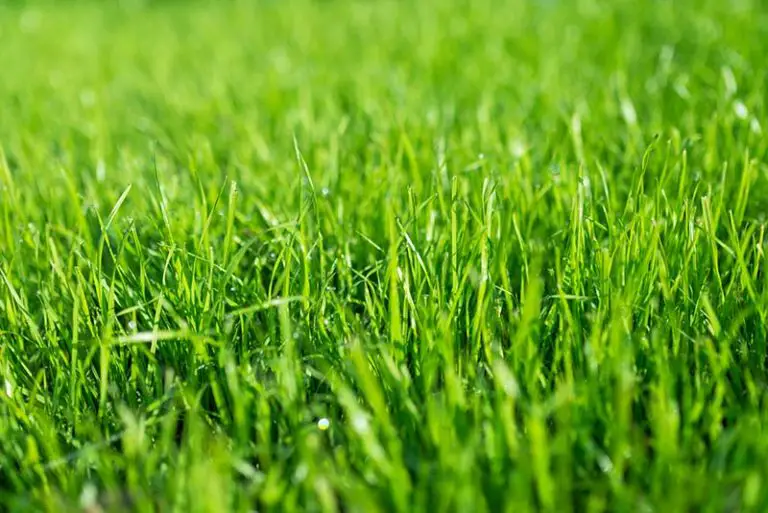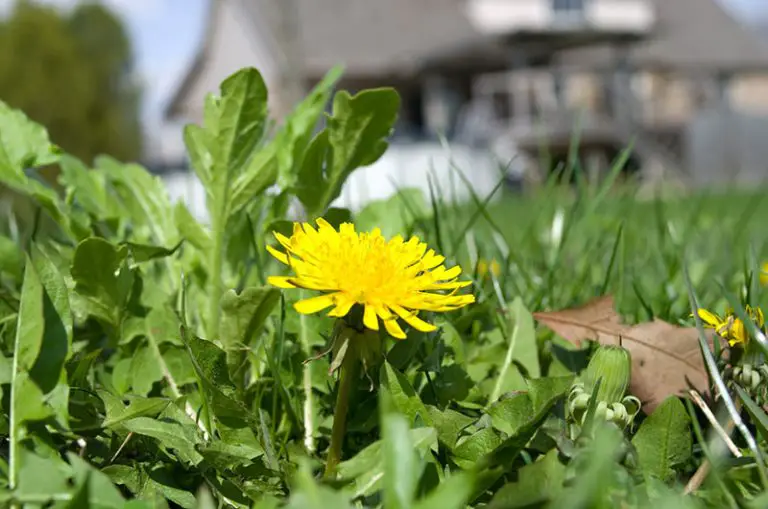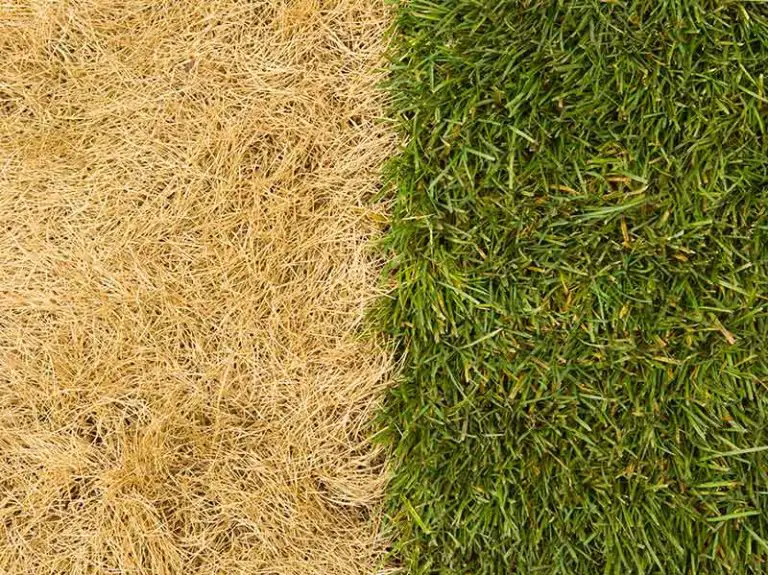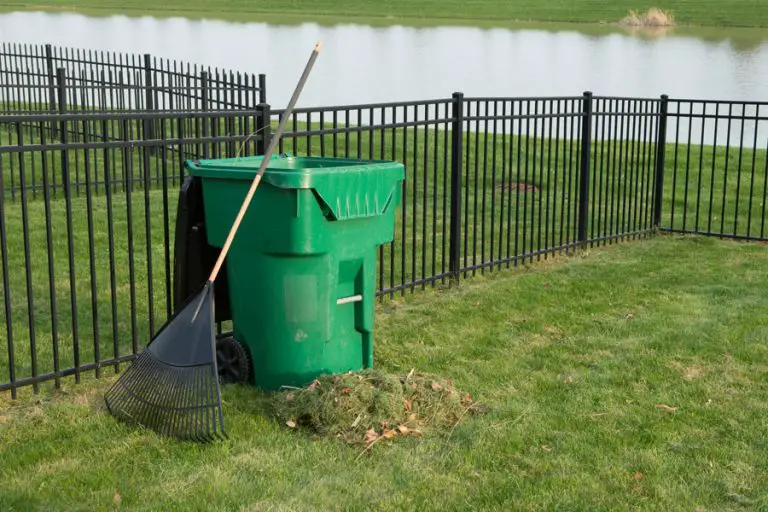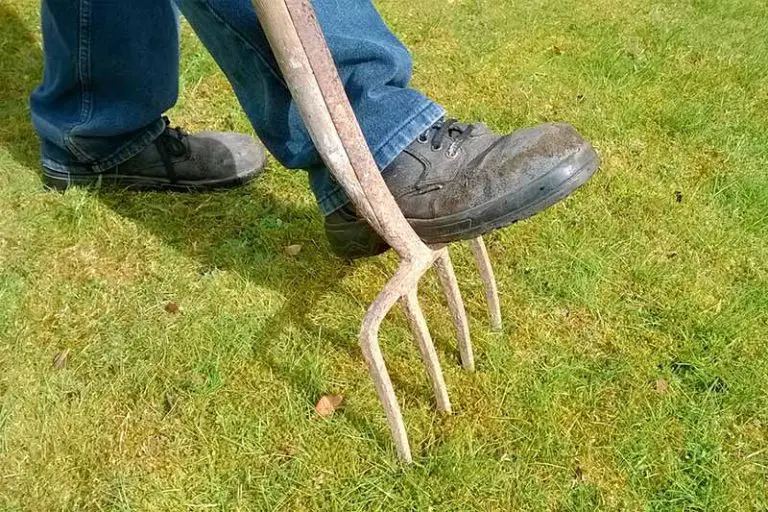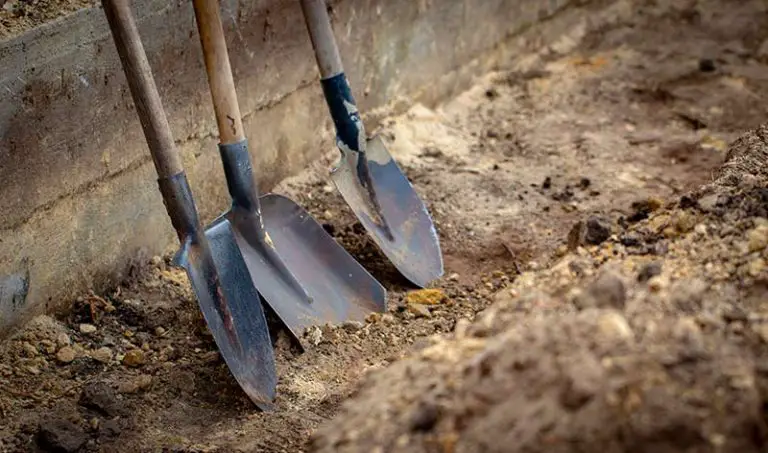How to Dry Out A Wet Lawn
Maintaining your lawn takes a lot of time and effort. Whilst it can be exhausting at times, it can also be very rewarding to know that your efforts have led to a healthy yard. All this effort, however, can be undone in the event of your lawn becoming waterlogged. If you act quickly enough, you can prevent any damage from waterlogging and help your lawn get back to its former glory.
In the event of your lawn becoming waterlogged or wet, the best thing to do is use sand to absorb the water and help it drain from the soil in order to keep it dry. If this fails to work, there are also some other methods you can try.
What is a Waterlogged Lawn?
Waterlogged lawns are lawns which are unable to drain the standing water that inhabits them. They commonly occur after long periods of rain, storms or flood. In rarer cases, a waterlogged lawn could be due to a drain leakage or burst pipe.
Waterlogged lawns are characterized by the abundance of water which has pooled in them and isn’t draining away naturally. You can often visibly tell if your lawn is waterlogged if you can see the puddles and noting how long they have persisted for. Wet soil can also allude to your yard being waterlogged. Although harder to see, it could be evidence that there is an issue with drainage or a pipe leakage below the yard if the soil is particularly damp – even if there has been no rain.
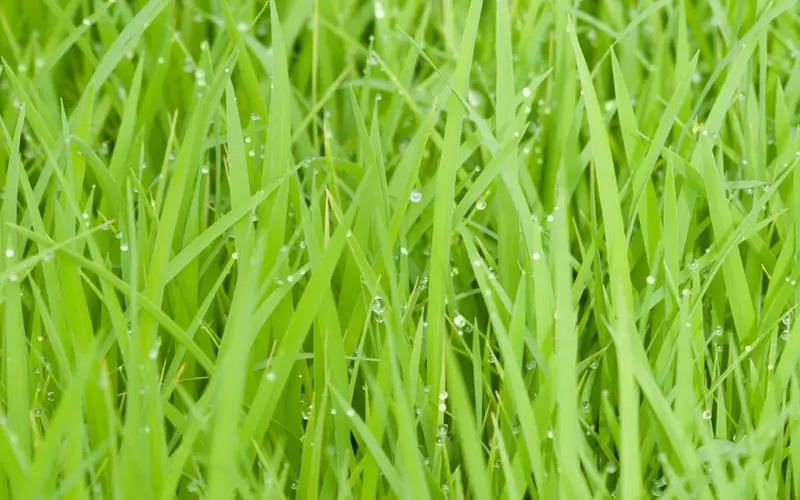
What Causes a Waterlogged Lawn?
Waterlogged lawns are often the result of water becoming trapped on the lawn and being unable to drain. As a result, it is either left to evaporate – which can take a very long time – or it stands there and becomes stagnant. The ins and outs of standing water is covered in full in How to Get Rid of Standing Water in Yard.
The causes of a waterlogged lawn can range from heavy rainfall, to flooding, to a damaged or burst pipe beneath the lawn. Regardless of the source of the water, one thing remains the same. That the lawn itself is unable to move the water or drain it sufficiently.
Waterlogged lawns can also be the result of an irrigation system being faulty. A damaged sprinkler pipe could be causing water to rise to the surface of the soil, or a mismanaged sprinkler head could be causing water pooling. Sprinkler lines are likely to break if they aren’t winterized correctly, leading to leaks. If you find leakage near your sprinkler lines, it is a possibility that one has broken.
Before any future preventative measures take place, it’s important to make sure that the lawn is as dry as possible beforehand.
Soil Types
Similarly to plants, there are different types of soil that you can use in your garden. Each type of soil has its advantages and disadvantages, and can affect the performance and health of your lawn’s plants. If your lawn is devoid of any of the previously mentioned issues, it could be waterlogged due to the soil which is laid on it. Soil types which contain a lot of clay, loam, are too compacted or contain rocks are more likely to lead to waterlogged lawns than soils which have better absorbent qualities.
Testing Your Soil Type
You can easily test to see what type of soil you have in your garden using a simple method. This will allow you to see how well the soil drains and absorbs water and will provide an indication as to whether the waterlogging in your lawn is a result of the soil type failing to drain water correctly or not.
Take a mason jar and fill it with the soil that you have in your garden. Then, fill the jar with water. This will cause the soil to separate into its different components.
THe contents of the jar will separate into three layers. At the bottom, the sand will sit, the middle will be the silt layer and finally the clay will stay at the top. After one minute, make sure to mark off the level of sand, after two hours mark off the level of silt, and then the clay once the water eventually clears. This should give you an idea of how much of each component is present within the soil.
You can also test your soil’s drainage by digging a small foot-deep hole in the garden and filling it with water. After leaving it an hour, see if the water has drained and if not, repeat the process to see if there is any difference.
What are the Risks of a Waterlogged Lawn?
A waterlogged lawn can have several risks associated with it. Some of these risks are merely cosmetic, whilst others can prove to be potentially dangerous.
Damaged Grass
Waterlogged lawn will eventually suffocate grass due to its need for carbon dioxide. Leaving grass submerged in water for too long will lead to it eventually dying, or at least yellowing or browning.
Bad Smells
A waterlogged lawn will begin to smell as stagnant water begins to age. Depending on the size and amount of time the water has been standing for will affect the smell of it.
Unsightly Lawn
On the more cosmetic side of things, a waterlogged lawn isn’t particularly nice to look at, especially when puddles are visible and the water has started to go dirty.
Sick Pets
Parasites such as ringworm love to make their home in standing water. A waterlogged lawn is more likely to host such parasites and microbes, which can lead to pets and other local wildlife becoming ill.
Mosquitoes
Waterlogged lawns are the ideal breeding ground for mosquitoes. Mosquitoes normally breed over ponds or other areas filled with standing water. If your garden is filled with water that refuses to drain, you may find yourself inundated with breeding mosquitoes. Mosquitoes are of a particular concern as they can easily enter the home and are known to carry diseases such as Zika, West Nile and Malaria.
Damage to House
If the stagnant water is close enough to the house foundations, it can lead to damage to them. This can lead to leaks in the basement, damage to beams that support the house and can lead to mosquito and other bug infestations within the house.
Fungus
A wet lawn is more likely to develop fungus, given the correct conditions. Lawn fungus grows best on damp and wet lawns, and can spread quickly if given the chance. Fungus can eventually lead to damaged grass.
A waterlogged lawn should be dried and the issue causing it fixed as soon as possible, as these issues can escalate over time if not addressed. If the issue causing the waterlogged lawn is to do with a damaged pipe beneath the lawn, it can lead to further issues in the future which may affect more than the lawn.
Drying out a Waterlogged Lawn
Knowing how to dry a waterlogged lawn is important if your lawn is prone to puddles or poor drainage. Whilst waterlogged lawns are a burden and can prove to be difficult to dry out completely, there are a couple of methods you can try to speed the process up.
Wait for it to Evaporate
Sometimes, just waiting for the water to evaporate without interference is the most reliable option. This, of course, only works if no more rain is expected to fall over the coming days to give it a chance to dry out naturally. This method can also be paired up with other methods to accelerate the process of drying.
Sweeping
Sweeping puddles away with a standard brush or broom can work on smaller areas to alleviate the amount of water that has congregated. This works well in tandem with waiting for the water to evaporate, as sweeping can move some of the more stubborn water.
Sand
Sand can dry out a wet lawn quicker than evaporation alone. Adding sand to your topsoil can increase its absorbency and ensure that your grass dries out quicker than usual. This method is much more successful if your soil is high in clay content. The best way to spread sand around your lawn is to use a broadcast spreader and apply it in a zigzag pattern along the areas of lawn that need attention.
It helps if you can visibly see the sand between the grass, but this method can be repeated weekly until your lawn isn’t as wet as it was.
Plant More Grass Seed
This method is more dependent on specific circumstances, such as how much water is standing on your lawn, but if there is very little, you can attempt to plant grass seed in the hopes that it will absorb the excess water as it begins to grow. This is, of course, a slow-burning solution and only works best if you need to plant more grass seed to an area anyway, but it’s something worth considering if you want to put some of the trapped water to good use.
Preventing Waterlogged Lawns
The easiest way of making sure that your lawn isn’t waterlogged is to prevent it from getting waterlogged in the future. There is a multitude of ways to prevent water from getting trapped on your lawn, most of which involve either landscaping, plumbing, or changes to your garden.
Uneven Lawns
Uneven lawns are most likely the culprit if you find a puddle of water persisting in the same area each time it rains. Sometimes this can be confirmed by simply walking over the area and feeling the land dip. Uneven lawns can be fairly easily refurbished by leveling and regrading them. This can be done by slowly filling up the offending area with soil and fine gravel to make it even to the rest of the lawn. This works best for small dips in the land, if the issue seems to be with larger areas or even the whole yard, it may be a job for a professional landscaper who can level the yard correctly and fully.
Water Pipe Damage
Damage to a water pipe that is lying below your lawn could cause a significant amount of water to arise and stagnate in your yard. There are a couple of ways to test if the water lingering in your yard has come from a broken pipe.
- Check your water pressure– If your water pressure has dipped or isn’t what it used to be, it could be due to a problem with a pipe.
- How long has the water been there? – If the water in your garden appeared whilst the weather was dry, the chances are that the source of it could be from somewhere else.
- Does it smell? – Sewer or drain water is more likely to smell than water that has occurred naturally from a storm.
- Does it keep reappearing? – If the puddle reappears in the same area despite being cleaned up and despite the weather being dry, it is most likely an issue with a drain beneath.
Water pipe damage will need to be assessed and fixed by a plumber or other qualified professional. If you suspect that a water pipe is leaking beneath your yard, make sure to get it fixed ASAP as it can become unhygienic very quickly.
Irrigation System
Your irrigation system may be causing water to pool in your yard. It could be caused by several things, including your sprinkler heads not being aligned correctly and overlapping their streams, or a damaged irrigation pipe. A damaged irrigation pipe can be easily repaired by either replacing it or sealing it. If you have a map of your irrigation system, you should easily be able to access the system and fix the issue. If the waterlogging is a result of your sprinkler heads being misaligned, they can also easily be readjusted to make sure they do not overwater areas of the garden. If push comes to shove, you can also remove sprinkler heads from zones or cap sprinkler heads off to reduce the amount of water your garden receives.
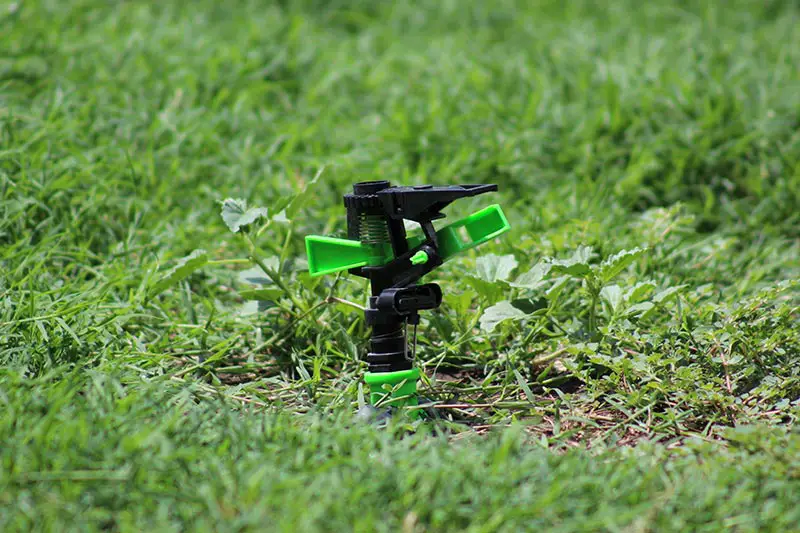
Aeration and Dethatching
As discussed previously, the quality of the soil in your yard can easily affect how well your lawn drains water and rainfall. You can take some preventative measures by making sure that your soil is aerated and dethatched. Aeration and dethatching prevent your soil from becoming too compacted and allow it space to breathe. It is beneficial for both your soil and the grass that is planted in it. Maintaining your lawn using aeration and dethatching techniques is one way to prevent water from going stagnant on your lawn. Aeration is a technique in which small holes are poked into the lawn to allow for better drainage, and dethatching is used to remove clumps of grass that may be entangled, thus allowing water to be absorbed easier. Both lawn aeration and dethatching involve multiple steps, which are better outlined in How to Aerate a Lawn and How to Dethatch a Lawn.
Deeper Roots
Plants with deeper roots are guaranteed to soak up more water than plants without. Soil that is compacted and isn’t aerated may even strangle some larger roots, preventing them from doing their job. By aerating your soil, your plant’s roots should be able to grow longer and healthier, preventing water buildup. You can promote deeper root growth by keeping the ground moist during germination, using high-quality compost and use methods of irrigation that will reach deep into the lawn.
French Drains
Installing a French drain will lead to fast results the next time there is heavy downfall. These drains are sometimes already installed in areas that have frequent bad weather. In order to install a French drain, you need to make sure that your lawn is on a sloped angle to assist in draining. A French drain won’t work if it is level. French drains are installed underground and help move water away from areas that usually cause a problem. You can purchase French drain kits to DIY, but contractors can also come out and fit them for you.
Redirect Waste Water
Downspouts that travel from your house’s gutters may empty their contents straight onto your lawn. If your lawn is prone to waterlogging, you may be able to alleviate some of the strain by redirecting the water that comes from these downspouts. You can attach a PVC pipe extension to the end of the downspout to enable to water to move elsewhere, or you could dig a small, shallow trench from the downspout, leading to a place where you want the water to be redirected to.
Dry Creek Beds
Dry creek beds are used as a redirection to prevent water from traveling from one area to another. They are often used downhill to keep water moving to another area. To create a dry creek bed, simply create a small channel from one area downhill to another area, and use landscaping rocks of different sizes to line it. This is quite an aesthetically pleasing project, and is functional too.
Build a Rain Garden
A rain garden is a small area of plants that grow very well in environments that are often wet and muddy. By having plants in an area of your garden that thrive in wet conditions, water that is causing your lawn to muddy up can be absorbed more efficiently. In order to build a rain garden, create a depression in your yard to purposefully collect rainwater (or use a depression that already does this), and plant a collection of water-loving plants inside. These plants can include but are not limited to, cardinal flowers, blue stars, swamp hibiscus, lilies, goldenrods, amongst others. A rain garden should be set up a fair bit away from the foundations of your home to ensure that no damage to it occurs due to the water that will be attracted to it.
Final Thoughts
A wet lawn can be a nightmare for any gardener whose hard work has been undone. Even worse is when a wet lawn doesn’t drain quickly enough, leaving stagnant pools of standing water to take over. Thankfully, there are remedies that can dry your lawn out quickly and prevent standing water from becoming a recurring issue in your yard. By making sure your lawn isn’t susceptible to standing water and mud, you can rest assured that it will be looking beautiful all year round.

